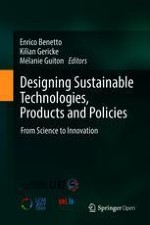1 Introduction
1.1 Energy System Models: Origin and Strengths
1.2 Advantages of Integrating ESOM and LCA
1.3 Literature Review
Sectors | No of tech. mapped | Scope | Database | Ref. |
|---|---|---|---|---|
Norwegian electricity sector | 9 | Attributional | ecoinvent 3 | [3] |
US electricity sector | 9 | Attributional | US LCI and ecoinvent 2.2 | [4] |
Multisector (end-uses) and electricity sector (Switzerland) | 43 | Attributional | ecoinvent 2.2 | [5] |
Electricity and oil mining sector | 7 | Attributional | ecoinvent 1.1 | [7] |
Multisector | 192 | Consequential | ecoinvent 2.2 | [6] |
Spanish electricity sector | 26 | Consequential | ecoinvent 3 | [12] |
UK energy supply | 250 | Not stated | UK EE-MRIO | |
EU electricity sector | 146 | Not stated | Exiobase and ecoinvent | [10] |
French biofuel sector | 35 | Not stated | mixed | [11] |
